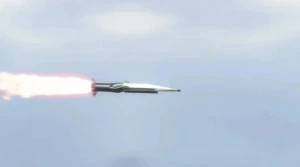
Russia steps up strikes with guided aerial bombs: how Ukraine can fight them
In October, an absolute record of 1,165 hits was set, and on November 6, the largest number of such bombs dropped in a day was set - 103
Journalist and military expert Oleksandr Kovalenko reported this, according to Obozrevatel.
The cause is a shortage of missiles
In 2022, the Russian forces found themselves in a difficult situation when they began to experience a shortage of cruise, ballistic and airborne missiles. At the same time, they had no powerful and effective means for air strikes in the forward area. To be more precise, they had aerial bombs, but almost all of them, being free-fall bombs, jeopardized the destruction of the aircraft and its pilot.
It was for this reason that Russia began to accelerate the implementation of the project to create planning bombs. Although there was no need to create it from scratch - such work had been underway for a long time.
At that time, they began to produce a unified planning and correction module - a tool that allows a free-fall bomb to plan to a distance of up to 30 km, depending on the altitude of the drop, and relatively accurately hit targets.
Unified gliding and correction module (UMPK)
The module is a 'flying wing' idea that is propelled into flight when a bomb is dropped and concurrently cocked into a combat-ready state. This is accomplished through the use of a spring-type mechanism that is tensioned and restrained by a latch prior to engagement.
However, UMPK production in Russia is far from a serial, factory-based, automated process with quality control. It's more handmade, "garage" creation in industrial quantities. UMPKs are manufactured in large quantities and at a rapid pace.
As a result, they are not always triggered. There have been numerous instances of bombs failing to open their UMPKs, i.e., the latch did not work. A similar case was in the Belgorod area, when a Russian Su-34 dropped planning bombs that failed to activate the UMPK, and they fell freely on the city.
In addition, there have been recorded cases of UMPKs collapsing in the air after being uncovered. Thus, on March 12, 2023, one of such bombs collapsed in the Kuibyshev district of Donetsk.
Another disadvantage of the UMPK is that the bomb itself is not always guaranteed to be in a combat-ready state when it is dropped. This is where the module can work perfectly, but the bomb simply fails to detonate on landing.
However, the main and undeniable advantage of UMPKs is that they can be produced in hundreds per month. No shortage is expected in the near future.
Counteraction
It is impossible to shoot down aerial reconnaissance bombs. Therefore, we should concentrate not on fighting guided aerial bombs themselves, but their carriers - the tactical aviation of the Russian Federation.
1. First and foremost is air defense
Russian aircraft are destroyed throughout the battle line before a Russian front-line bomber can reach the target to deliver a guided aerial bomb. That is, Ukraine requires air defense systems capable of destroying enemy aircraft not simply 30 kilometers deep into temporarily seized territory, but also of at least 20 kilometers.
All of this leads to the need for Ukraine to employ medium-range air defense means along the front line, with a target engagement range of 70 km or more. This is a significant advantage in the fight against guided aerial bombs.
However, even for cities with millions of inhabitants, such air defense systems are insufficient. And we are unlikely to obtain such a big number of such systems from our partners in such a short period of time. That is a disadvantage.
2. Aviation with long-range air-to-air missiles
Such missiles are used by Western fighters, most notably the F-16s, which use the AIM-120 AMRAAM. Furthermore, unlike the MiG-29, the F-16s have a considerably more advanced arsenal of weaponry, and the help of partners from other nations' airspace by airborne radar planes maximizes the potential of these missiles.
With even older modifications and a target engagement range of 70–100 kilometers, we may construct an extreme flight zone for Russian aviation even over temporarily seized Ukrainian territory.
However, to be as effective as possible, such measures necessitate coordination of the means utilized by us and our partners. Furthermore, we have yet to receive F-16s, implying that such a situation is plausible in the long term but not in the short term.
3. ATACMS
The ATACMS missiles that Ukraine has received and will continue to receive from the US feature two notable modifications: the M39 and the M39A1. Both are cluster-mounted missiles, with the former carrying 950 M74 submunitions and the latter 300. The M39 missile can reach targets up to 165 kilometers away, and the M39A1 missile can hit targets up to 300 kilometers away.
And these missiles are great for attacking airfields. So we're already employing ATACMS before we get our F-16s from our allies.
We can push Russia to return its jets to its territory by initiating regular strikes on airfields in temporarily controlled territories. As a result, their tactical aviation's operational capabilities will be limited, amortization costs will grow, and the surprise factor will be reduced.
ATACMS can be a more effective solution to the guided aerial bomb problem than F-16s or air defense assets. The main thing is to get them in the right quantity, in a timely manner and in the right modifications.
- News














































